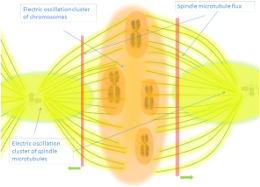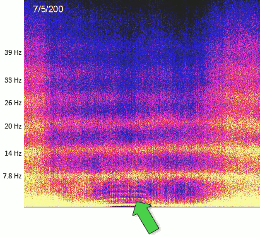

Other Related Questions
Some potential risks and addictions to telecommunications. Conflicts of interest
Mobile phone usage poses diverse risks beyond electromagnetic field (EMF) exposure, including psychological, cognitive, and environmental concerns. This section synthesizes findings on these risks while examining critical evaluations of international institutions, such as the International Commission on Non-Ionizing Radiation Protection (ICNIRP), highlighting their reliance on outdated models, conflicts of interest, self-referencing practices, and failure to account for non-thermal biological effects. ...
The evidence underscores the need for transparent, independent, and comprehensive assessments of EMF safety standards to safeguard public health.
The ubiquity of mobile phones has transformed communication and daily life, introducing both conveniences and risks. While much attention has focused on the health implications of EMFs, a broader spectrum of risks, including cognitive and environmental impacts, merits consideration. Furthermore, institutional approaches to EMF regulation, particularly by ICNIRP and similar entities, face growing scrutiny for their limited scope, reliance on self-referencing, and potential conflicts of interest. This section explores these multifaceted risks and critiques institutional practices.
Health and Cognitive Impacts of Mobile Phone Usage:
Cognitive Decline:
Studies reveal significant cognitive impairments linked to excessive smartphone usage, particularly in memory, attention, and executive function. Declines in global cognitive scores have been observed in heavy smartphone users, with effects amplified in younger populations (Sharma et al., 2023).
Structural brain changes, including reduced gray matter volume in the insula and temporal cortex, correlate with smartphone addiction and altered resting-state activity in the anterior cingulate cortex (Horvath et al., 2020).
Mental Health:
Excessive mobile phone use is associated with increased risks of anxiety, depression, and insomnia, with female users exhibiting higher vulnerability (Ali et al., 2021).
Sleep quality is adversely affected by late-night smartphone usage, with disruptions in circadian rhythms and reduced REM sleep linked to prolonged screen exposure (Huang et al., 2020).
Environmental and Ecological Concerns:
The proliferation of mobile phones contributes to e-waste and electromagnetic pollution, exacerbating environmental degradation (Raveendran et al., 2021).
Smart city initiatives relying on wireless technologies face criticism for prioritizing technological expansion over sustainable design, with significant rebound impacts on ecosystems.
Institutional Critiques: Challenges with ICNIRP’s Framework:
Reliance on Outdated Models:
ICNIRP’s safety limits predominantly focus on thermal effects, ignoring mounting evidence of non-thermal biological impacts, such as oxidative stress, DNA damage, and neurological changes observed at low-intensity exposures (ICBE-EMF, 2022).
Regulatory thresholds based on limited animal studies from the 1980s fail to account for advances in understanding EMF interactions with biological systems.
Conflicts of Interest:
Institutional ties between ICNIRP and industry stakeholders raise questions about objectivity. Key members with affiliations to telecom sectors have historically influenced EMF policy narratives (Weller et al., 2024).
Analysis of advisory agencies reveals constraints in their independence, with directives aligned more closely with industry and governmental priorities than public health (Nyberg et al., 2023).
Self-Referencing Practices:
A detailed examination of ICNIRP’s 2020 guidelines reveals extensive self-referencing among its authors, raising concerns about echo chambers within the institution. The paper "Self-referencing authorships behind the ICNIRP 2020 radiation protection guidelines" identifies a lack of external critical peer review, with over 90% of cited works authored or co-authored by ICNIRP-affiliated members (Hardell, 2021).
This practice narrows the scope of scientific discourse, excluding diverse perspectives and recent findings that challenge the institution’s established paradigms.
Inadequate Consideration of Vulnerable Populations:
Children and pregnant women, particularly sensitive to EMF exposure, are often excluded from ICNIRP’s risk assessments, despite evidence showing significant developmental and reproductive effects (Gotz et al., 2023).
Cumulative exposure effects in urban populations are insufficiently addressed, leaving gaps in protective measures for high-risk groups.
Broader Implications:
Erosion of Public Trust:
Perceived conflicts of interest and narrow regulatory approaches undermine public confidence in health guidelines. Calls for independent, interdisciplinary reviews have gained traction in scientific and advocacy communities.
The self-referencing highlighted in ICNIRP’s work reinforces skepticism, prompting calls for external audits and oversight.
Need for Updated Standards:
Integrating non-thermal effect studies and adopting precautionary principles are critical to establishing comprehensive exposure limits that reflect current scientific understanding.
Discussion: The convergence of risks associated with mobile phone usage and shortcomings in institutional oversight highlights the urgent need for reforms. Addressing these challenges requires collaboration across disciplines, including epidemiology, neuroscience, and environmental science. Transparent methodologies, independent evaluations, and equitable representation of diverse populations must guide future regulatory frameworks. Additionally, institutions like ICNIRP must embrace broader scientific discourse to regain credibility and efficacy.
Conclusion: Mobile phone technologies, while indispensable, present significant risks that extend beyond EMF exposure. Coupled with institutional limitations in addressing these risks, the evidence calls for a paradigm shift in regulatory practices. By embracing a holistic and precautionary approach, stakeholders can better balance technological advancement with public health and environmental sustainability.
Keywords: mobile phones, EMF, ICNIRP, cognitive effects, non-thermal mechanisms, public health policy, environmental impact, self-referencing, institutional critique.
-Text generated by AI superficially, for more specific but also more surprising data check the tables below-Very related sections:
↑ text updated (AI generated): 05/01/2025
↓ tables updated (Human): 18/04/2025
Applied Fields - Hazards
 Other Related Questions
Other Related Questions
.
.


























